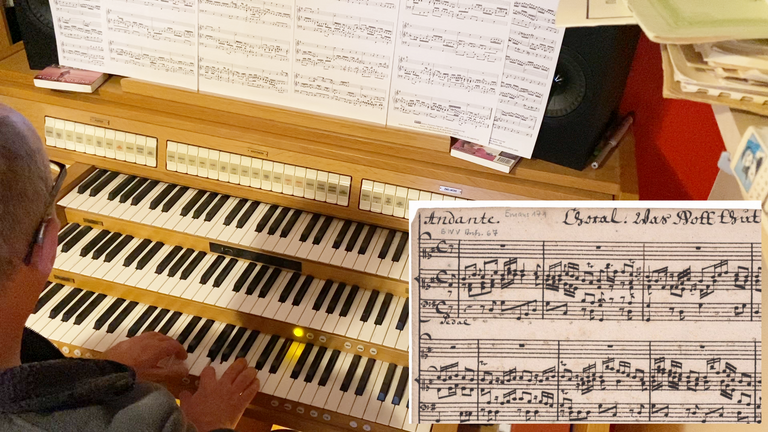It is a fact that people like to have a name of the creator to go with a piece of art. Pieces that cannot be attributed to a person, are somehow less valuable. Probably because of the innate desire to admire someone. In music this is espescially true. Anonymous pieces are seldom edited and published, because they don’t sell. Even if the quality of the music is very high, if the manuscript source does not indicate a composer, the music is not published. There are enough examples of hitherto unpublished composition on my website.

Now, suppose you have a piece, not necessarily your own composition, that you want to generate some interest in? It needs a name of a composer to ‘sell’. And if it is organ music, what better name than Johann Sebastian Bach?
That’s probably why there are so many composition attributed to Johann Sebastian Bach, where his authorship is (very) doubtful. The second appendix to Schmieder’s catalog of Bach’s compositions (the BWV Anhang II) lists more than 100 of these spurious compositions, several dozens of which are meant for organ. The index Reinmar Emans compiled, lists another 215 of possible Bach organ composition. The quality of the compisitions on both lists is very uneaven as is the style of them and most of them are very probably not composed by Bach.
Since the compilation of the Emans-catalogue a fair number of compositions have been positively attributed to other composers. Another part of the compositions on Emans’ list are tentatively attributed to other composers, based on stylisical grounds. The same goes for the compositions that are part of BWV Anhang II. Some of these compositions are now known to be by other composers and hence they are removed from the list and given a plce somewhere else in Schmiedewr's catologue.
Number 67 of the second appendix is still tentatively ascribed to Johann Sebastian Bach. And even though there are several compositions in this appendis that could be genuine Bach works, number 67 is, in my opinion, almost certainly not one of them. The music is written in galant style, as opposed to the thoroughly contrapuntal style of Johann Sebastian Bach. So the ascription was probably done, somewhere in the past centuries to sell the music better.
Now this is not necessaraly a bad thing. If the asription to Bach 'sells' the music, it means it is being played, instead of lying somewhere forgotten on a shelf in some library. And if a new engraving of the music helps to 'sell' it again and hopefully make some more organists play this music, that is a good thing. Though I won't go as far as making the claim 'yes, this is my of the great Johann Sebastian Bach'. It isn't.
Probably.
The recording was done with the Hauptwerk software and the sampleset, made by Sonus Paradisi, of the Schnittger organ in the St. Martini-kerk, Groningen (https://www.sonusparadisi.cz/en/organs/netherlands/groningen-st-martini.html).
Score available here: http://partitura.org/index.php/johann-sebastian-bach-was-gott-tut-das-ist-wohlgetan-bwv-anh-ii-67
Your post has been supported and upvoted from the Classical Music community (Subscribe at peakd) as it appears to be of interest to our community. We also support jazz and folk music posts!
If you enjoy our support of the #classical-music community, please consider a small upvote to help grow the support account!
You can find details about us below.
Peakd and DiscordHive Vote!